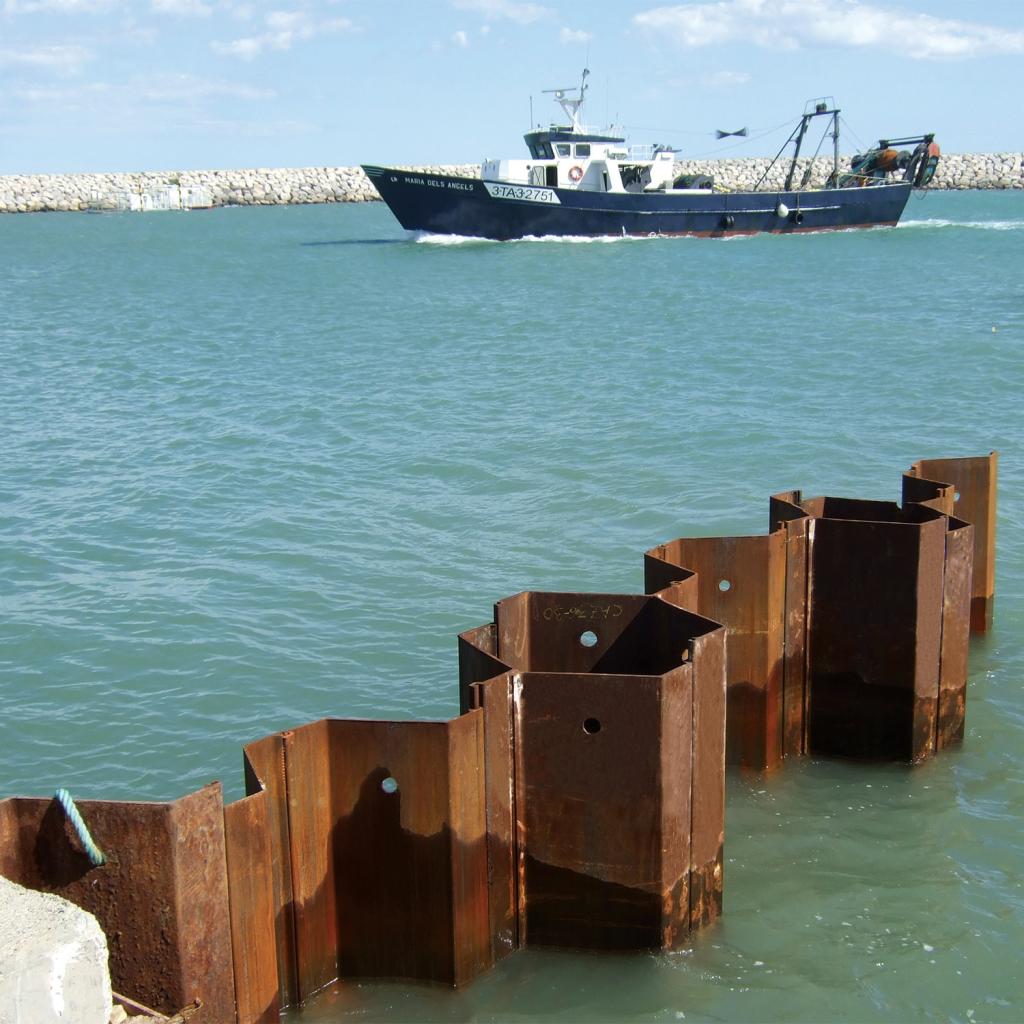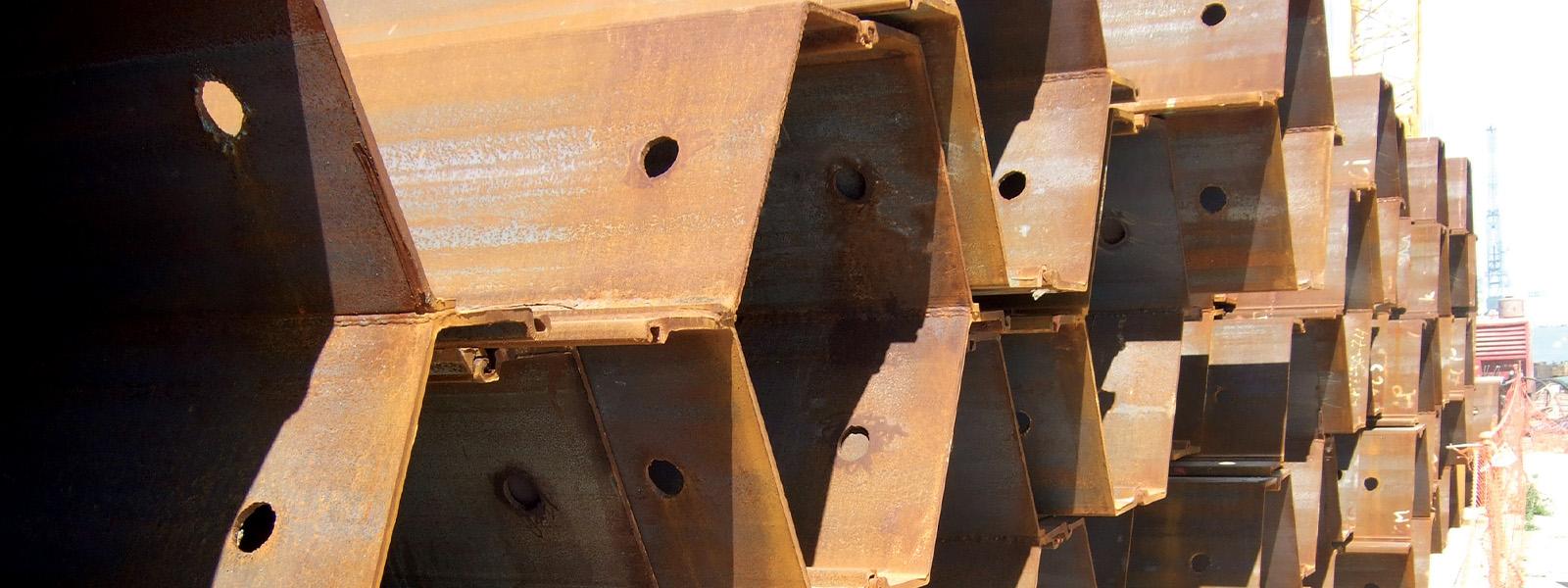Box piles
CAZ & CAU/CU/CGU
Box piles
Welded box piles are fabricated from conventional hot rolled sheet piles. They are formed from
- four single AZ piles;
- sometimes from a pair of AZ’s and a bended plate;
- 2, 3 or 4 U sections.
They can be conveniently introduced into a wall of standard sheet piles at any point where heavy loads are applied. They can be used to resist vertical and horizontal forces, and can generally be positioned in the wall such that its aesthetical appearance is unaffected.
Boxes may also be used as individual bearing piles for foundations or in open jetty and dolphin construction. Their large radius of gyration makes them particularly suitable for situations where construction involves long lengths of pile with little or no lateral support.
In general, box piles are driven open ended. Soil displacement and ground heave is normally eliminated since the soil enters the open end of the pile during initial penetration and forms an effective plug as the toe depth increases. Box piles can be driven into all normal soils, very compact ground and soft rocks.

Technical database
Consult our products characteristics
CAZ
CAZ box piles are mostly used to
- build up combined walls (one system = one CAZ and one pair of AZ) which have a higher bending moment capacity and moment of inertia;
- reinforce standard AZ sheet pile walls at specific locations, for instance to transfer large vertical loads to the soil.
Available profiles:
CAZ box piles are formed by welding together two pairs of AZ sheet piles. Two interlocks of one of the pairs are cut off, and the flange is welded over its whole length to the other sheet pile.

CAU/CU/CGU
CU, CAU and CGU box piles are formed by welding together 2 (double box piles), 3 (triple box piles), or 4 (quadruple box piles) U sheet piles.
Available profiles:
Usually, a box pile is fabricated with the same profiles welded along the interlocks over the whole length, with a return weld on the top of the piles. The thickness of the weld depends on the section.
U-type box piles are used quite often as mooring dolphins or to protect other structures from ship impacts.

Our projects
Learn more from real practical cases


